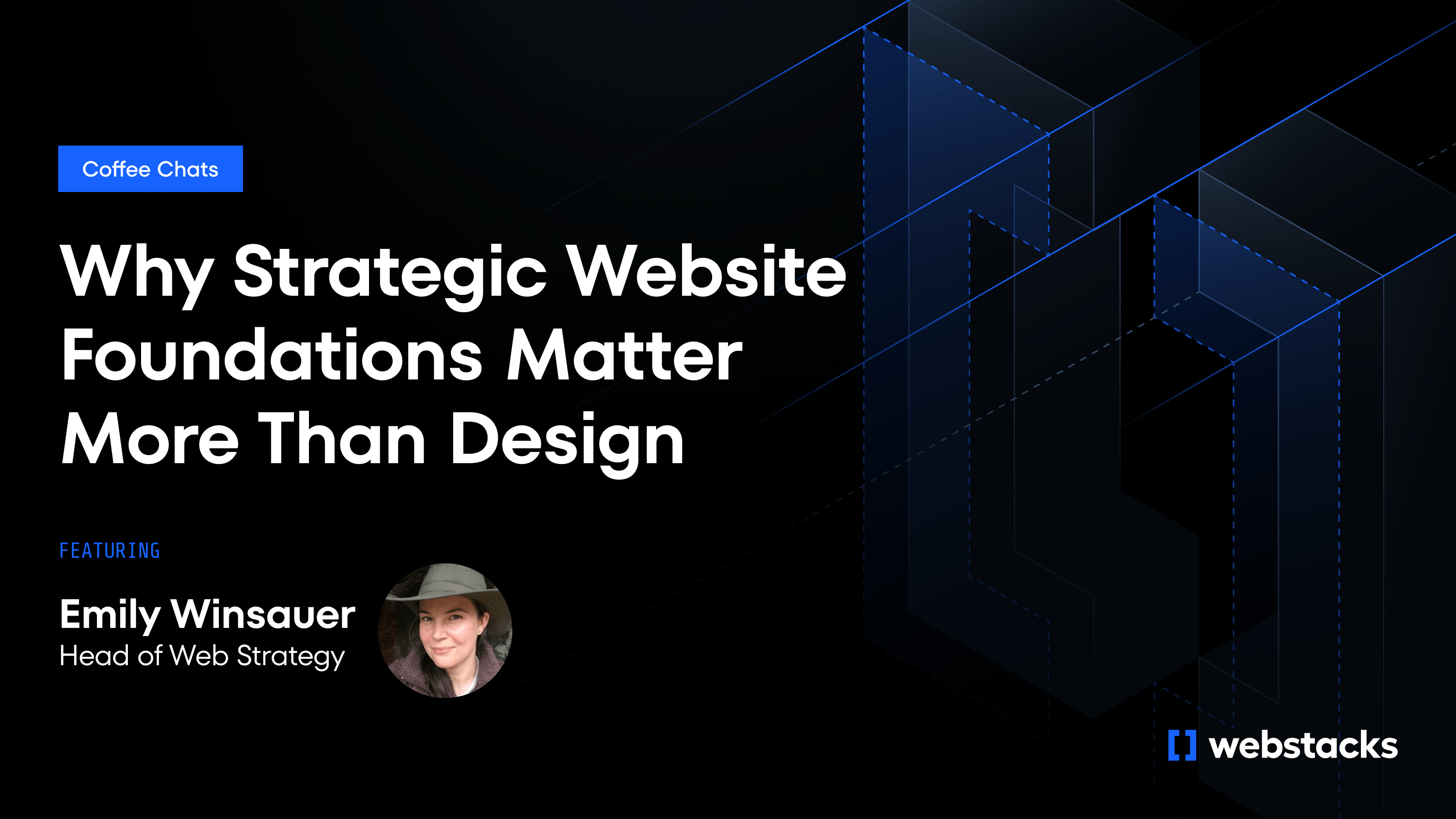Your web team just launched an AI chatbot to help visitors find the right products. But instead of providing helpful, specific recommendations, it gives generic responses like "We offer various solutions for different needs." Meanwhile, your competitor's AI assistant confidently recommends specific features, cites exact pricing, and links to relevant case studies.
The difference isn't in the AI technology—you're both using similar large language models. The problem is that your content lives in unstructured silos that AI can't effectively understand or access. While your competitor has organized their information into clear, machine-readable formats with open access points, your valuable expertise remains locked away in content management systems that treat everything as undifferentiated text blocks.
This bottleneck prevents AI from delivering on its promise. ChatGPT, Claude, and other models have proven their capabilities, but they need structured, accessible content to provide accurate, helpful responses. Without this foundation, your AI implementations will continue to underperform, leaving visitors frustrated and competitors ahead.
The solution requires two complementary approaches: structured content that provides the semantic context AI needs to understand your information, and APIs that create pathways for AI to access and update that content in real-time. Together, they transform your content from static pages into dynamic, AI-ready resources that power better customer experiences.

Why Traditional AI Approaches Fall Short
Most organizations approach AI implementation by pointing language models at existing websites and hoping for good results. This rarely works because traditional content management prioritizes human readers over machine understanding.
Consider how most companies publish product information. A typical product page might contain pricing, features, specifications, testimonials, and technical requirements all mixed together in rich-text fields. To human visitors browsing your site, this feels natural and readable. But when an AI system tries to extract specific information—like finding the exact price for enterprise customers or identifying which features address compliance requirements—it must parse through paragraphs of mixed content types, often making errors or missing critical details.
Search engines have already moved beyond this approach. Google's algorithm increasingly favors content with explicit semantic markup because it can extract precise information for featured snippets and knowledge panels. AI systems operate with similar needs but higher stakes—they must understand not just what content says, but how different pieces of information relate to each other and when each piece should be surfaced.
The companies succeeding with AI implementation have recognized this fundamental shift. They organize content into discrete, labeled components where pricing lives in dedicated fields, features exist as structured lists, and relationships between products, use cases, and customer segments are explicitly defined. This structured approach enables AI to provide accurate, contextual responses rather than generic summaries.
The Framework That Enables AI Success
Effective AI implementation requires rebuilding how you think about and manage content. Instead of pages filled with mixed information, you need content systems built around two core principles that work together to bridge the gap between human-readable content and machine understanding.
Semantic Structure
Organizing information into clearly defined types, fields, and relationships transforms how AI systems interpret your content. Rather than storing a blog post as one large text block, you separate title, author, publish date, categories, summary, and body sections into discrete elements. Each field serves a specific purpose and follows consistent formatting rules.
This granular organization allows AI systems to understand exactly what each piece of information represents and when it should be used. When a customer asks about pricing, the AI can pull from dedicated price fields rather than attempting to parse dollar amounts scattered throughout marketing copy. When someone needs technical specifications, the system accesses structured specification data instead of hunting through paragraphs of product descriptions.
Programmatic Access
Providing APIs that allow AI systems to read and update content in real-time eliminates the bottlenecks that plague traditional AI implementations. When your chatbot needs current pricing information or wants to create personalized recommendations, it can query specific data points rather than scraping entire web pages. This real-time access ensures AI responses stay current and relevant.
The difference becomes apparent when product information changes. With programmatic access, your AI systems automatically reflect updated pricing, new feature releases, or modified specifications the moment they're published. Without it, AI responses become outdated until someone manually retrains models or updates static data sets—a process that often takes weeks and leaves customers with incorrect information.
Combined, these approaches create content systems that serve both human visitors and AI applications effectively. Your website remains engaging and usable for human readers, while AI systems can access the precise information they need to provide helpful, accurate responses.

The Three Technical Pillars of AI-Ready Content
Implementing AI-ready content requires coordinating three technical capabilities that work together to bridge the gap between human-readable content and machine understanding.
1. Technical Foundation
The foundation layer handles how AI systems discover, access, and interact with your content through three key capabilities:
- API Endpoints: Expose your content through defined endpoints using formats like JSON that machines can process without ambiguity. When your content management system provides REST or GraphQL endpoints, every piece of structured content becomes instantly accessible to AI applications.
- Real-Time Synchronization: Webhooks enable automatic notifications when content changes, keeping AI systems current without manual intervention. Rather than relying on periodic crawling, AI applications receive immediate updates when you publish new articles, update pricing, or modify product specifications.
- Granular Permissions: Fine-grained access controls ensure AI systems can reach appropriate content while protecting sensitive information. You might allow customer service AI to read all product information but restrict it from modifying pricing, or enable marketing automation to update campaign content while blocking access to financial data.
2. Content Intelligence
The intelligence layer focuses on making your content understandable and useful to AI systems through structured organization:
- Semantic Markup: Use structured data formats like Schema.org to explicitly label content types, relationships, and attributes. When you mark up product pages with structured data for prices, reviews, and availability, AI systems can extract this information with confidence rather than guessing based on page layout.
- Hierarchical Organization: Create a clear information architecture that AI can navigate effectively with explicit relationships between content pieces. Product pages link to related features, case studies connect to relevant industries, and documentation organizes around user workflows. This connected structure helps AI understand context and provide more relevant recommendations.
- Answer-Oriented Formatting: Structure content to directly address user questions with discrete sections that can stand alone as complete answers. This approach improves both human readability and AI citation accuracy by eliminating the need to parse lengthy paragraphs for specific information.
3. Trust & Authority
The authority layer establishes credibility and governance for AI-generated responses through quality controls:
- Validation Rules: Act as quality gates, ensuring that only properly formatted, complete information enters your content system. When AI tools update product descriptions or generate new content variants, these rules prevent inconsistent formatting or missing required fields from reaching your website.
- Citation Tracking: Maintain clear source attribution for all content so every AI-generated summary or recommendation can trace back to specific, authoritative sources within your content system. This transparency builds user confidence and allows you to audit and improve AI performance over time.
- Version Control: Create accountability for all content changes, whether made by humans or AI systems, with timestamps, attribution, and rollback capabilities. This audit trail enables rapid response when AI-generated content needs correction while maintaining a complete history of how information evolves.
Why This Matters for Your Business
Organizations that implement structured content with API access gain significant advantages in the AI-powered web landscape. These advantages compound over time, creating widening gaps between companies that embrace structured approaches and those that remain locked in traditional content silos.
Speed of AI Implementation
When your content is properly structured, new AI applications become possible in weeks rather than months. Instead of spending time building custom scrapers, training models on inconsistent data, or manually organizing information, your team can immediately connect AI systems to clean, organized content through existing APIs.
Consider customer service AI: when someone asks about enterprise pricing, the system pulls exact figures from dedicated pricing fields rather than parsing marketing copy. This delivers specific answers with relevant terms and documentation links—all from authoritative, current data. This speed advantage allows you to experiment, iterate, and deploy successful AI solutions while competitors wrestle with data preparation.
AI Response Quality and Accuracy
Structured content eliminates the guesswork that causes AI hallucinations and inaccurate responses. When pricing information lives in dedicated fields, feature descriptions follow consistent templates, and relationships between products and use cases are explicitly defined, AI systems provide reliable, accurate responses. This reliability builds user trust and reduces the support burden that comes from AI systems providing incorrect or outdated information.
Marketing teams demonstrate this with personalized page experiences that combine structured content blocks based on visitor characteristics. For healthcare professionals, AI instantly selects relevant case studies, medical practitioner testimonials, and compliance-focused feature descriptions—delivering targeted experiences that convert better than generic messaging.
Scalability Across Use Cases
The same structured content foundation enables multiple AI applications without additional data preparation. Your customer service chatbot, marketing personalization engine, and automated content updates all draw from the same clean, organized content repository. This reusability dramatically reduces the cost and complexity of expanding AI capabilities across different business functions.
Content operations teams see this benefit when AI systems automatically identify outdated information across entire websites. The system monitors industry changes, flags content needing revision, and suggests updates based on structured content patterns. The same foundation powering your chatbot also enables automated maintenance, multiplying team productivity without additional infrastructure investment.
Future-Proofing for Emerging AI Technologies
Structured content with API access adapts to new AI capabilities as they emerge. When new language models offer improved reasoning, when voice interfaces become more prevalent, or when AI agents gain more sophisticated capabilities, your structured content foundation remains relevant and immediately usable. Teams stuck with unstructured content must rebuild their approach with each new AI advancement, while your investment continues paying dividends across every new AI breakthrough.
Transform Your Content for AI-Powered Growth
Structured content and API access transform your content from static information into dynamic, AI-ready resources that enhance every aspect of your digital presence. When you organize information for machine understanding while maintaining human readability, you create systems that scale intelligently and adapt to changing user needs.
Webstacks specializes in building exactly these kinds of composable, AI-ready websites. Our team designs content architectures and API frameworks that unlock AI capabilities while maintaining governance and brand consistency. We help organizations transition from traditional content management to modern, structured approaches that enable intelligent applications and automated workflows.
If you're ready to move beyond static websites and build content systems that power intelligent experiences, we'd love to help. Reach out to explore how structured content and APIs can unlock AI capabilities for your organization.




